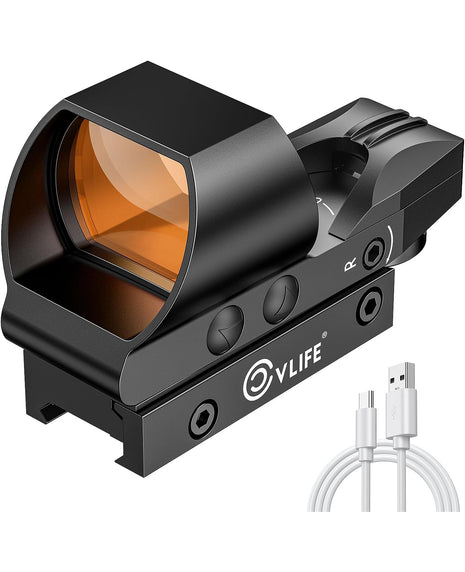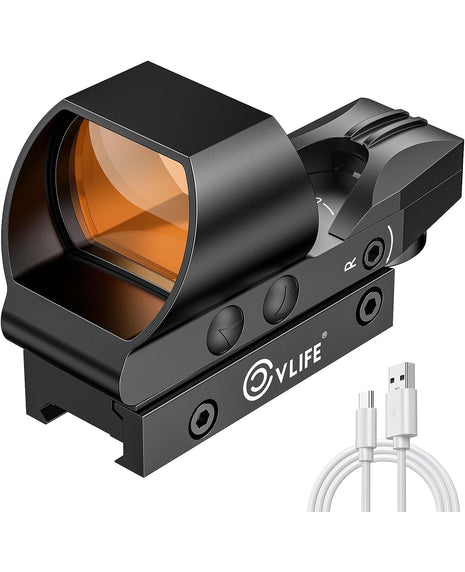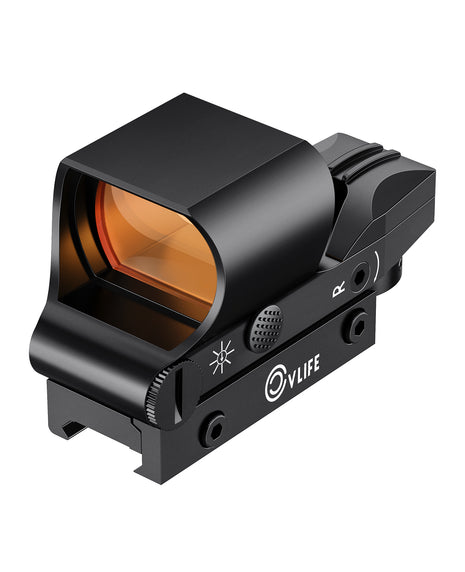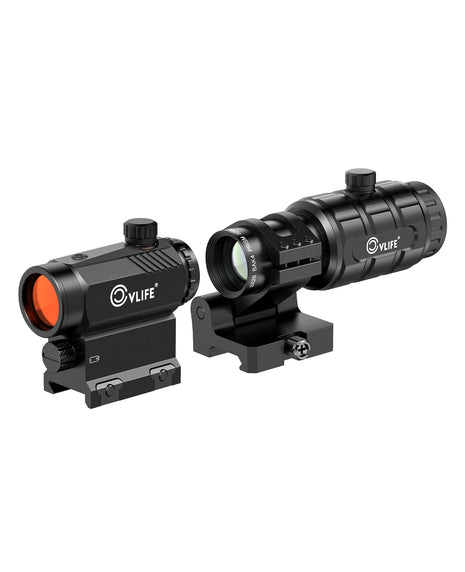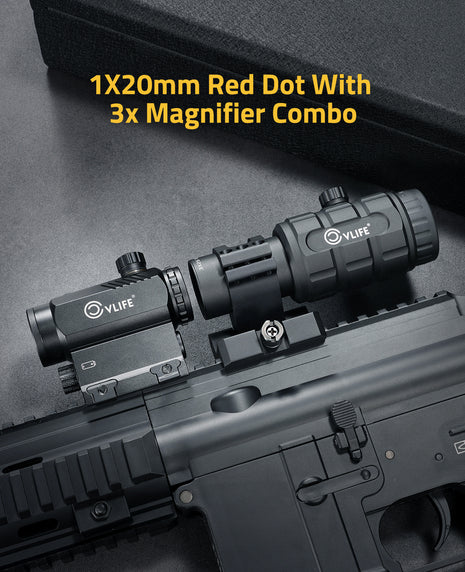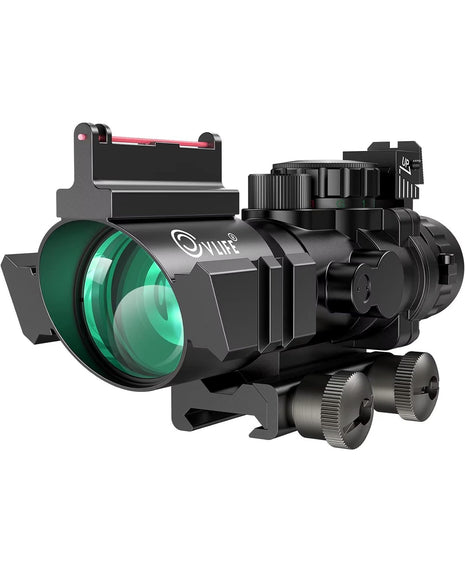Wie man ein 7-35x56 FFP Zielfernrohr für präzises Jagen verwendet
- 6 Min. Lesezeit
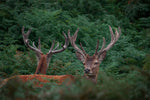
Meistern Sie die Kunst des präzisen Jagens mit einem 7-35x56 FFP Zielfernrohr. Entdecken Sie Tipps zur Einrichtung, Vergrößerungskontrolle und Genauigkeit für erfolgreiche Langstreckenschüsse.
Bei der Langstreckenjagd ist Präzision nicht nur wünschenswert – sie ist unerlässlich. Ob Sie nun nach Maultierhirschen über eine Schlucht spähen oder darauf warten, dass ein Elchbulle einen Grat überquert, die Optik, die Sie wählen, kann den Unterschied zwischen Erfolg und Misserfolg ausmachen. Ein Zielfernrohr, das bei Jägern zunehmend an Beliebtheit gewinnt, ist das 7-35x56 First Focal Plane (FFP) Zielfernrohr. Mit seinem großen Vergrößerungsbereich und fortschrittlichen Absehen-Systemen bringt dieser Zielferntyp professionelle Genauigkeit ins Feld.
Was ist ein 7-35x56 FFP Zielfernrohr?
Ein 7-35x56 Zielfernrohr bietet eine variable Vergrößerung von 7x bis 35x und ein großes 56mm Objektiv für maximale Lichtdurchlässigkeit. Das macht es zu einer Kraftmaschine, um Wild auf Distanz bei schlechten Lichtverhältnissen wie Morgendämmerung oder Abenddämmerung zu erkennen – die beste Zeit für die Jagd.
Das First Focal Plane (FFP) bedeutet, dass das Absehen mit der Vergrößerung skaliert. Egal, ob Sie ganz herausgezoomt oder auf 35x eingestellt sind, Ihre Haltepunkte bleiben konstant, was genaue Wind- und Höhenkorrekturen ermöglicht.
Warum ein 7-35x56 FFP Zielfernrohr für die Jagd wählen?
- Präzise Genauigkeit für Langstreckenschüsse
- Ballistische Absehen, die sich mit dem Zoom anpassen
- Verbesserte Leistung bei schlechten Lichtverhältnissen
- Flexible Kombination mit Kalibern wie .300 Win Mag oder 6.5 Creedmoor
Ideale Jagdszenarien für ein 7-35x56 FFP Zielfernrohr
- 🦌 Westliches Großwild (Maultierhirsch, Elch, Antilope)
- 🐺 Raubtierkontrolle (Kojoten, Wölfe)
- 🏔️ Alpine Umgebungen (Schafe, Ziegen)
- 👣 Spot-and-Stalk-Taktiken aus großer Entfernung
Verstehen von Absehen und Einstellungen im Feld
FFP (First Focal Plane) Zielfernrohre verfügen oft über MRAD (Milliradian) oder MOA (Minute of Angle) Absehen – zwei verschiedene Messsysteme, die helfen, die Entfernung abzuschätzen, den Geschossabfall zu korrigieren und den Wind auszugleichen. Ein großer Vorteil eines FFP-Zielfernrohrs ist, dass die Teilstriche des Absehens (der Abstand der Markierungen zum Zielen) bei allen Vergrößerungsstufen konstant bleiben. Das bedeutet, wenn Ihre ballistische Tabelle sagt, Sie sollen für eine bestimmte Entfernung 1 MOA oder 2 MRAD halten, ist diese Haltepunktangabe genau, egal ob Sie auf 10x oder voll auf 35x vergrößert sind.
Das macht es viel einfacher, Ihr Zielfernrohr effektiv zu nutzen, ohne komplizierte Berechnungen anzustellen oder bei verschiedenen Vergrößerungen zu raten. Ein großer Vorteil für Langstreckenjäger, die auf Präzision bei ethischen Schüssen angewiesen sind.

Viele FFP-Optiken, einschließlich High-End-Modelle, verfügen auch über beleuchtete Absehen. Diese sind besonders hilfreich bei Dämmerungsjagden – wie dem ersten erlaubten Licht bei Tagesanbruch oder wenn Sie in dunklem Wald sitzen, wo kaum Sonnenlicht durchdringt. Das Absehen leuchtet gerade genug, um Sie auf das Ziel zu halten, ohne Ihre Sicht zu überstrahlen.
Montage- und Nullstellungstipps für Jäger
- Verwenden Sie hochwertige Montagen oder einteilige Ringe
- Nullstellung auf 100 oder 200 Yards je nach Ihrem Wild
- Parallaxe für Ihre üblichen Schussdistanzen einstellen
- Verwenden Sie eine Zielfernrohr-Wasserwaage, um Kippfehler zu vermeiden
Vergleichstabelle der Zielfernrohre
| Merkmal | 7-35x56 FFP Zielfernrohr | 4-16x44 SFP Zielfernrohr |
|---|---|---|
| Vergrößerung | 7x bis 35x | 4x bis 16x |
| Absehen-Typ | Erste Bildebene (FFP) | Zweite Bildebene (SFP) |
| Beste Verwendung | Langstreckenjagd, Zielschießen | Mittelstreckenjagd, allgemeiner Gebrauch |
| Gewicht | Schwerer | Leichter |
Expertentipps für die Jagd mit Hochleistungsoptiken
Üben Sie das Verstellen Ihrer Türme unter Stress. Warten Sie nicht auf das Feld, um herauszufinden, wie Ihr Zielfernrohr nachführt!
-
Nicht zu stark heranzoomen beim Scannen
Obwohl es verlockend ist, Ihr Zielfernrohr bis auf 35x hochzudrehen, ist dieses Vergrößerungsniveau normalerweise am besten für präzise Schüsse reserviert. Für allgemeines Absuchen oder Wildbeobachtung bleiben Sie bei niedrigeren Zoomstufen – etwa 7x bis 12x. Das gibt Ihnen ein weiteres Sichtfeld, hilft Ihnen, Bewegungen leichter zu erkennen und Tiere zu verfolgen, ohne die Umgebung aus den Augen zu verlieren.
-
Verwenden Sie feste Unterlagen oder Zweibeine für Stabilität
Bei höheren Vergrößerungen wird selbst das kleinste Zittern oder Bewegen durch das Zielfernrohr verstärkt. Um stabil zu bleiben, schießen Sie immer von einer festen Unterlage – sei es ein Rucksack, Schießstöcke oder ein hochwertiges Zweibein. Diese zusätzliche Stabilität ist entscheidend für präzise Langstreckenschüsse, besonders im offenen Gelände oder wenn Sie auf ein enges Schussfenster zielen.
-
Schützen Sie Ihre Linsen mit Kappen oder Abdeckungen
Staub, Feuchtigkeit und Kratzer können die Leistung Ihres Zielfernrohrs schnell beeinträchtigen. Verwenden Sie Objektivkappen oder Klappdeckel, wenn Sie durch Gestrüpp wandern oder Ihr Gepäck tragen. Es dauert nur eine Sekunde, sie vor einem Schuss zu öffnen, und es hält Ihr Glas kristallklar und geschützt, wenn es am wichtigsten ist. Einige Jäger tragen sogar ein Linsenputztuch oder Anti-Beschlag-Tücher im Rucksack – nur für den Fall.
Empfohlenes Zielfernrohr für Langstreckenjäger

Für Jäger, die kompromisslose Präzision verlangen, ist das CVLIFE EagleBlaze 7-35x56 FFP Zielfernrohr eine Spitzenwahl. Mit voll mehrfachvergütetem Glas, Null-Stopp-Türmen und robuster Haltbarkeit ist es für Leistung unter Druck gebaut.
🔭 Entdecken Sie das CVLIFE EagleBlaze 7-35x56 FFP ZielfernrohrFAQs
Ist ein 7-35x56 Zielfernrohr zu stark für die Jagd?
Nicht, wenn Sie auf Großwild auf große Entfernung zielen. Es ist ideal für Jagden im Westen, offene Ebenen und hochgelegene Gelände.
Ist FFP wirklich wichtig für die Jagd?
Ja, besonders wenn Haltemarken verwendet werden. FFP hält Ihr Absehen auf jeder Zoomstufe genau.
Funktioniert dieses Zielfernrohr bei schlechten Lichtverhältnissen?
Absolut. Die 56mm Objektivlinse sammelt mehr Licht und verbessert die Leistung bei Dämmerung und Morgengrauen.
Welches Kaliber eignet sich am besten für die Kombination mit einem 7-35x56 Zielfernrohr?
Beliebte Wahlmöglichkeiten sind .300 Win Mag, 6.5 Creedmoor und .308 Win wegen ihrer Langstreckenpräzision.
Ist dieses Zielfernrohr zu schwer für die Jagd im Hinterland?
Es kann sein, je nach Gewicht Ihres Packs. Aber viele Jäger sind bereit, die zusätzlichen Unzen für präzise Schüsse zu tragen.
Tags
Featured collection
Blog posts
-

, von C V Ihr AR-15 Zielfernrohr ist nicht das Problem – Ihre Montage ist es
-

, von C V 🧐 Ich dachte, mein Leuchtpunktvisier wäre eingeschossen… Dann habe ich das hier ausprobiert
-

, von C V Red Dot und LPVO: Maximieren Sie die Leistung Ihres AR-15
-

, von C V Die meisten Schützen machen hier einen Fehler: Die korrekte Zielentfernung beim AR-15

